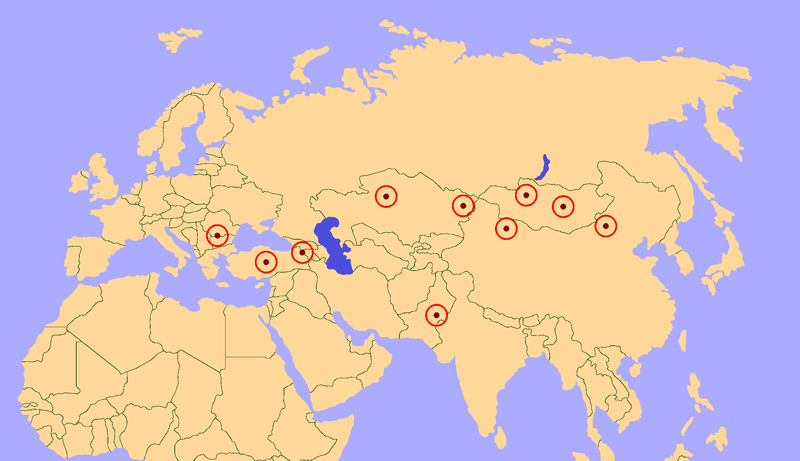Habitat & Geography
The Paraceratherium was first discovered in Mongolia in June
of 1928 (to learn more about the discovery click here). It is
thought that the origin of the Paraceratherium was in central
Asia, along with many other mammals. However, the
Paraceratherium was known to occupy a very large area, called
it’s home range. The home range of an animal is associated with
the size, and since the Paraceratherium is the largest mammal
ever, it is hypothesized to have roamed about 1000 square miles
throughout Turkey, Mongolia and China. This suggests that there
must not have been large populations of Paraceratherium in Asia
because it could only supply enough food, water, and shelter for
a few populations. The problem with this hypothesis is that it
is hard to imagine them roaming such large distances. In
comparison, many large modern mammals often divide up their
niches and develop other specialized traits to help them survive
a specific environment. This has not been seen in the
Paraceratherium species. They had relatively equal body sizes
and structures implying they all lived within the same niche.
The red circles indicate where populations of Paraceratherium were thought to have lived.